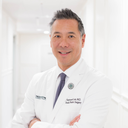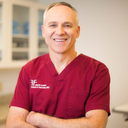I believe my patients are best served by having an anesthesiologist at ther bedside throughout surgery. It is what I would want for my family or myself. From my perspective as the surgeon, the most important issue is not the form of anesthesia but the credentials and experience of the person who is providing the anesthesia. The options that are available are the following: An anesthesiologist (board-certified MD)A certified registered nurse anesthetist (CRNA)An office nurse (RN) who is responsible for delivering and monitoring IV sedation Your plastic surgeon (believe it or not) administering sedation themselves or directing another person to do so In my practice II use experienced, board-certified anesthesiologists (MDs) for the anesthesia care of my patients. One of the many advantages operating in my own Dually accredited surgical suite is that the anesthesiologist is caring for my patient exclusively. The anesthesiologist remains at the bedside of my patient throughout the procedure.Beyond the issue of the person who is administering your anesthesia, the type of anesthesia really depends on what ‘facelift’ you are talking about, and what risk factors you may have for different forms of anesthesia. A mini-facelift generally takes one to two hours and can be performed in many patients under relatively light IV sedation. The only unpleasant portion of the procedure in terms of pain is the injection of local anesthesia at the very beginning. So the IV sedation is deeper initially for local anesthetic injection, and then once the entire surgical area is numb then the IV sedation can be lightened.A full facial rejuvenation surgical procedure (structural fat grafting, High-SMAS face and necklift, browlift, blepharoplasties, etc) may take six hours or more. These procedures can also be performed in many patients under prolonged IV sedation, which is referred to by anesthesiologists as MAC (monitored anesthesia care) anesthesia. To have a long surgery under IV sedation, you ideally should be under the care of an experienced anesthesiologist.By far the most important consideration from an anesthesia perspective is management (i.e. control of) a patient’s airway. If you can’t reliably provide oxygen delivery and carbon dioxide elimination, then you cannot conduct surgery safely. So experienced, board-certified anesthesiologists insist on some adequate and appropriate means of airway protection. For long IV sedation cases it is customary to pass a nasal airway (once a patient is sedated, of course) which goes in one side of the nose and into the back of the throat and helps to keep a sedated patient’s nasal airway open. It is removed before you wake up.Some patients will experience airway obstruction when sedated and laying in supine (on your back) position. If your snore heavily, and especially if you have sleep apnea, you are likely to be one of these patients. This in one of the reasons that a good anesthesiologist asks you so many questions before they perform your anesthesia: aspects of your history provide the anesthesia MD significant insight into what to expect and what to be particularly concerned about while you are under anesthesia.This is important to know: general anesthesia for elective cosmetic surgery, particularly longer cases, is an absolutely reasonable choice. In some patients it is the safest form of anesthesia – as your airway is completely. This is deeper level of anesthesia than IV sedation, and it requires a flexible, soft plastic tiube (either an endotracheal tube or laryngeal mask airway) to keep your airway open as the muscles that keep the airway open when you are awake will be relaxed. If you snore heavily or have sleep apnea, the safest form of anesthesia for you is general anesthesia with an ET tube or LMA.








